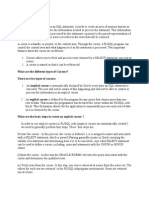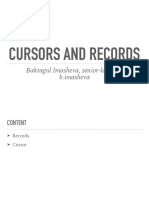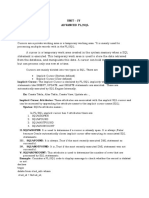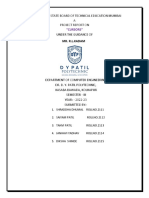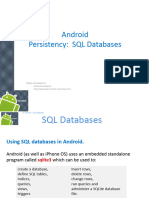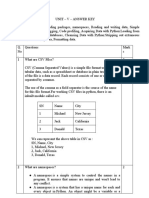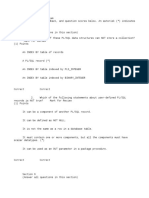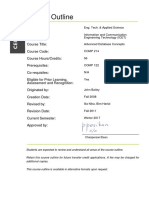0% found this document useful (0 votes)
15 views5 pagesPLSQL Cursor1
The document explains the two types of cursors in PL/SQL: Implicit Cursors, which are automatically managed by Oracle for single-row queries and DML operations, and Explicit Cursors, which are user-defined for handling multiple-row queries requiring manual management. Key differences include the need for declaration and control over operations, with Implicit Cursors being faster for single-row operations. It advises using Implicit Cursors for single-row queries and Explicit Cursors for multi-row queries requiring iterative processing.
Uploaded by
vyCopyright
© © All Rights Reserved
We take content rights seriously. If you suspect this is your content, claim it here.
Available Formats
Download as DOCX, PDF, TXT or read online on Scribd
0% found this document useful (0 votes)
15 views5 pagesPLSQL Cursor1
The document explains the two types of cursors in PL/SQL: Implicit Cursors, which are automatically managed by Oracle for single-row queries and DML operations, and Explicit Cursors, which are user-defined for handling multiple-row queries requiring manual management. Key differences include the need for declaration and control over operations, with Implicit Cursors being faster for single-row operations. It advises using Implicit Cursors for single-row queries and Explicit Cursors for multi-row queries requiring iterative processing.
Uploaded by
vyCopyright
© © All Rights Reserved
We take content rights seriously. If you suspect this is your content, claim it here.
Available Formats
Download as DOCX, PDF, TXT or read online on Scribd
/ 5


















